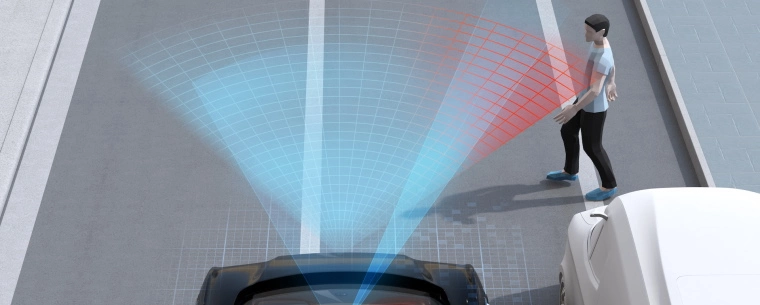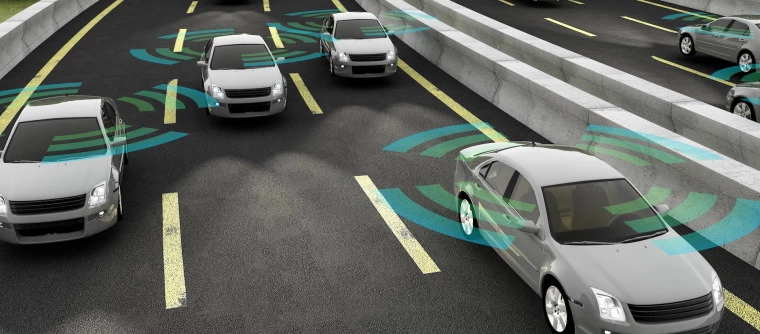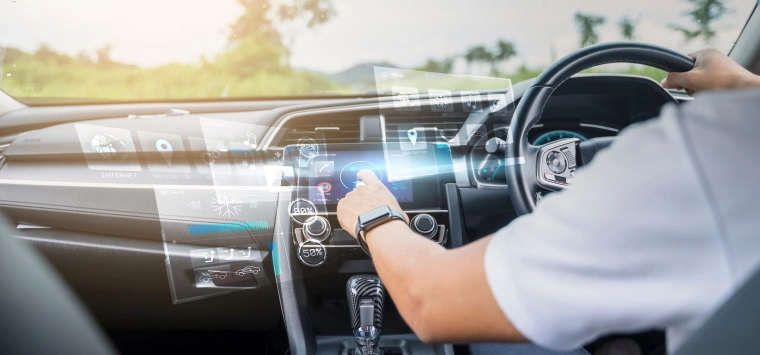Everything You Need to Know About ADAS
Jack Dreyer | Wednesday 15th June 2022 9:00am

Did you know that almost all vehicle accidents are caused by human error? Thatís anything from pulling out at a junction to reversing into other vehicles or obstructions!
Way back when drivers would have just had to develop a greater sense of spatial awareness if they wanted to save their paintwork. Luckily for us, however, drivers now have the likes of ADAS to help them manoeuvre safely.
Read on to find out more about what ADAS is and how it assists drivers across the world to control their vehicles more safely.
What is ADAS?
ADAS or Advanced Driver-Assistance System is a collection of electronic technology that assists drivers with both parking and driving functions.
What are the different types of ADAS?
Advanced Driver Assist Systems come in many forms, including systems that apply brakes if they sense a crash to adaptive cruise control and autonomous parking. These systems are usually found in high-end, modern vehicles. Some more examples of ADAS include:
1. Automatic braking
Automatic Emergency Braking (AEB) senses an imminent collision and activates your car's brakes, so you donít have to. If you fail to respond for whatever reason, this feature could save your life.
2. Adaptive light control
Adaptive light control (ALC) aims to improve the safety of night driving. Adaptive headlights will automatically change their brightness to suit the surrounding environment or current driving situation.
3. Lane assist
Lane assist will continuously assess your car's position on the road. If you unintentionally leave your lane, your car will react by offering a vibration, warning light, or audible warning. Active lane assist will take control of your steering wheel or use the brakes to get your car back in the lane.

4. Automatic parking
Automatic parking is as simple as it sounds - these systems can help you park with greater precision by using technology such as sensors, radars, and cameras to shift you into position.
How is ADAS useful?
ADAS aims to reduce the number of car accidents and the injuries and fatalities that occur as a result. Collision technologies strive to alert drivers to potential hazards and take control of the vehicle to avoid a threat to life. All in all, this improves a driver's ability to react to threats on the road and keeps the population safe.
Although safety is the biggest selling point of ADAS, there are also some practical advantages. Automatic parking, for example, makes it easier to squeeze into tight spaces and takes the stress out of parallel parking.
Adaptive light control features save you from messing around with your headlights while youíre driving and do all the work for you. Some say ADAS features make driving safer; others say it makes the practice Ďmindlessí, and that a reliance on technology could lead to more accidents in the future.
What are the pros and cons of ADAS?
ADAS Pros
- Increased safety: Statistics have found that vehicles fitted with ADAS systems are involved in 27% less bodily injury claims and 19% fewer property damage claims. Driver alertness is also improved by the system's ability to highlight potential hazards to drivers.
- Practical: Features such as automatic parking save time and make practical sense for many drivers.

ADAS Cons
- Cost: ADAS systems are expensive. Not only are they a pricey initial investment, but repairs on a car with ADAS can easily go into the thousands.
- Not always accurate: Features may not work correctly all of the time. Sometimes, brakes can be applied incorrectly, and sensors can be faulty.
- Challenges for insurers: Insurers may be hesitant to trust customers to identify which features have been installed, creating issues in underwriting and pricing coverage.
Will ADAS improve?
Though they offer some unparalleled safety benefits, ADAS doesnít come without its downfalls.
However, in 2020, the ADAS market was worth around 24.7 billion dollars. As demand continues to rise, manufacturers continue to look for ways to improve ADAS and make it more accessible, whether or not this will happen remains to be seen.
ADAS at Kwik Fit
ADAS is a valuable technology. While itís not immune from faults or criticism, itís already proved itself by offering drivers an unparalleled level of safety. As demand for ADAS increases, automated systems may soon take the wheel of our driving experiences.
Get your ADAS calibrated at your nearest Kwik Fit today. And, in the meantime, contact us with any questions you may have,
Any facts, figures and prices shown in our blog articles are correct at time of publication.
Featured Articles
Is it Illegal to Drive With One Headlight?
Saturday 19th July 2025
Wondering if itís illegal to drive with one headlight? Learn about the safety risks and penalties of illegal blown bulbs and why you should fix them promptly.
Air Con in EVs & Hybrids: Experts Answer Your Questions
Monday 30th June 2025
Does air con drain EV batteries? Can you use the air con while charging an electric car? Find out the answers to these questions & more from Kwik Fitís experts.
Why Is Your Car Making a Noise? Fixes & Tips
Friday 13th June 2025
When your car starts making unexpected noises, it can certainly be quite disconcerting; it may be nothing to worry about, but hereís what you need to know.









